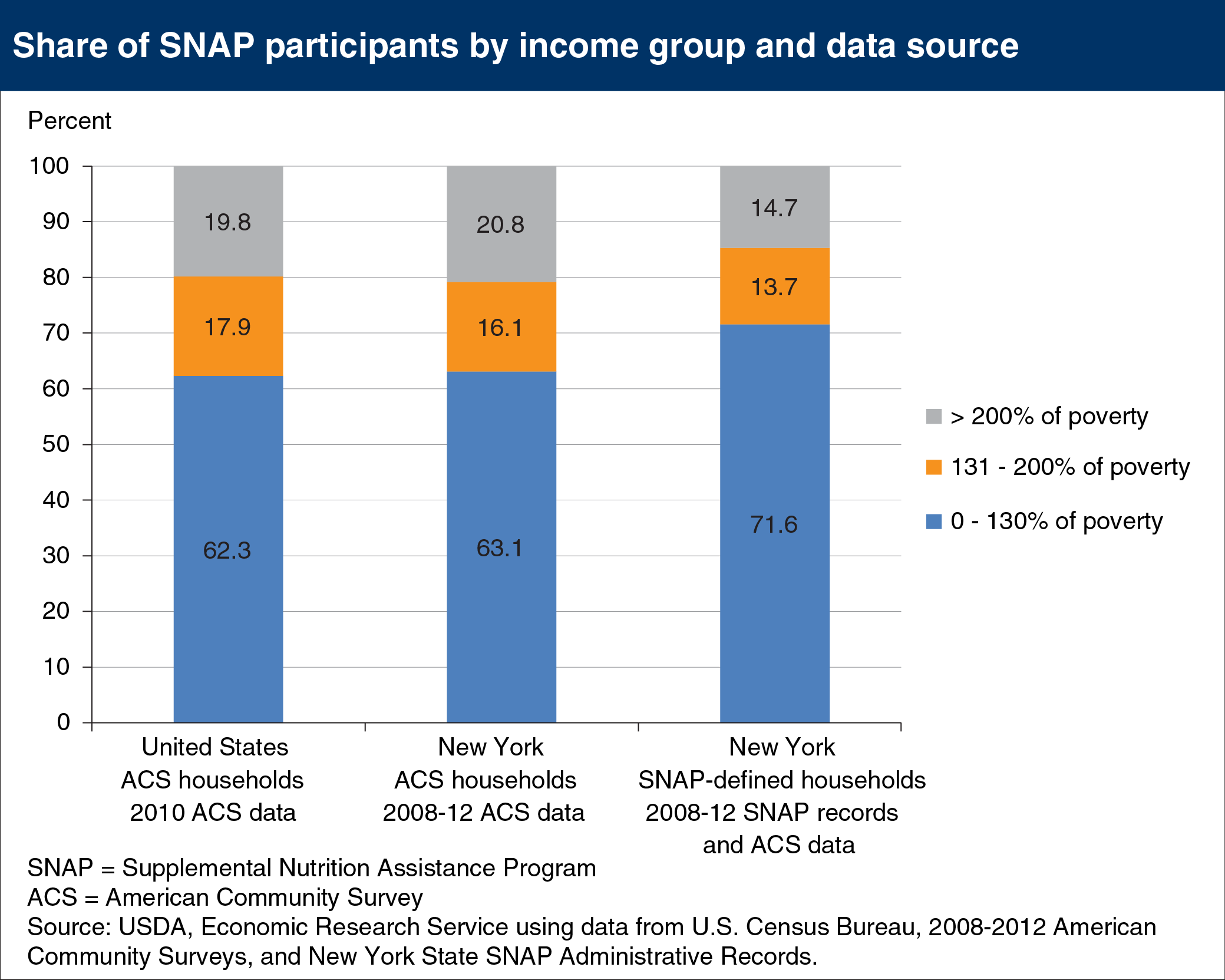Linking administrative and survey data shows SNAP reaching more of the poorest households
- by Erik Scherpf
- 10/8/2015

In general, households are eligible to participate in USDA’s Supplemental Nutrition Assistance Program (SNAP) if their gross monthly incomes do not exceed 130 percent of the poverty line, and if they meet other net income and asset criteria. Households with disabled or elderly members can qualify with higher incomes, and some States have adopted higher income thresholds. ERS researchers recently linked American Community Survey (ACS) data to SNAP administrative records from the State of New York to get a more complete look at whether SNAP benefits are reaching the poorest households. When researchers adjusted the households, as defined by the ACS, to reflect the SNAP definition of a household, they found that 71.6 percent of New York households receiving SNAP had annual incomes at or below 130 percent of poverty, compared with 63.1 percent using just the ACS data. Fifty-three percent of the New York SNAP households with incomes above 130 percent of poverty had an elderly or disabled member or a child. New York allows households with dependent care expenses to qualify for SNAP with gross monthly incomes up to 200 percent of poverty. This chart appears in “Linking Administrative and Survey Data Provides a More Complete Picture of Whether SNAP Benefits Reach the Poorest Households” in the September 2015 issue of Amber Waves magazine.

